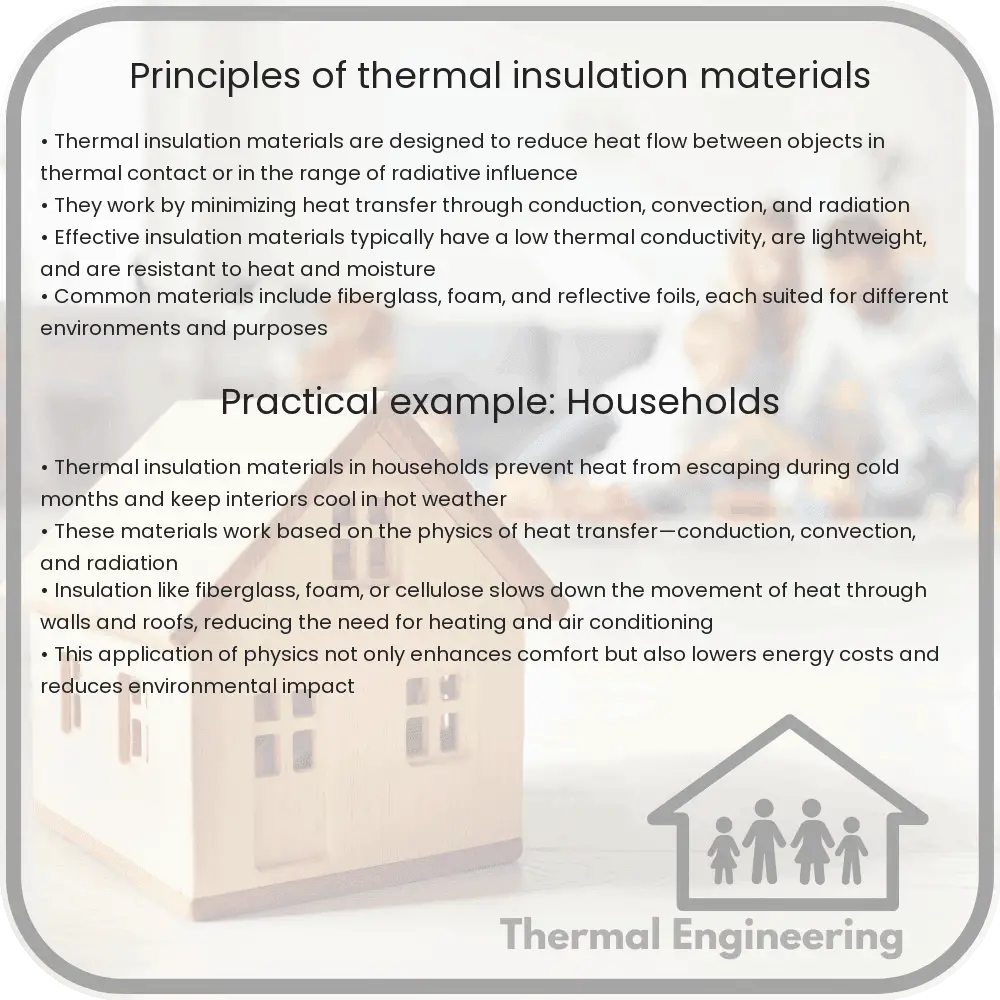Learn about thermal insulation materials, their types, functionalities, and the principles influencing their effectiveness in various industries.

Understanding the Principles of Thermal Insulation Materials
Thermal insulation materials play a critical role in reducing the heat transfer between objects in thermal contact or in range of radiative influence. They can be used in a variety of applications, from building insulation and refrigeration to automotive and aerospace industries. This article explores how these materials function, their types, and what physical principles govern their effectiveness.
How Thermal Insulation Works
Thermal insulation works based on the principle of minimizing heat flow. Heat can be transferred in three ways: conduction, convection, and radiation. Effective insulation materials essentially slow down the flow of heat, and they are evaluated based on their thermal conductivity or R-values (the higher the R-value, the better the insulation).
- Conduction: This is the heat transfer via direct molecular collision. An insulating material with low thermal conductivity hinders the movement of heat energy from one molecule to another.
- Convection: This involves the heat transfer through fluids (liquids or gases). Insulation materials minimize convective currents by trapping air or other gases.
- Radiation: Radiative heat transfer occurs via electromagnetic waves. Insulative materials with reflective surfaces such as foils can reflect radiant heat, while dense materials absorb and re-radiate heat slowly.
Types of Thermal Insulation Materials
There are several types of thermal insulation materials, each with unique properties and suited to specific applications:
- Fibrous Insulators: Materials such as fiberglass, rock wool, and slag wool. These insulators contain small diameter fibers that trap air, reducing convection and conduction.
- Cellular Insulators: Materials like polystyrene, polyurethane, and polyisocyanurate. These are composed of small individual cells that trap gases to impede convective heat transfer.
- Granular Insulators: Consist of small nodules which contain air pockets. Examples include perlite and vermiculite.
- Reflective Systems: Often used alongside other insulation types, reflective systems such as aluminum foils are designed to block radiant heat.
Key Properties of Insulation Materials
The effectiveness of insulation is determined by several key properties:
- Thermal Conductivity (λ): Indicates the material’s inherent ability to conduct heat. Lower thermal conductivity values represent better insulation properties.
- Density: Denser materials can store more heat, but this could also aid in heat transfer through conduction.
- Specific Heat Capacity: This is the amount of heat per unit mass required to raise the temperature by one degree Celsius. Materials with a high specific heat capacity can absorb more heat before they become warmer.
- Moisture Resistance: Moisture can drastically affect the performance of insulation materials. Some materials are more resistant to moisture than others, thus maintaining their insulative properties under damp conditions.
- Fire Resistance: In some applications, it is crucial for the insulation to be fire-resistant. Materials that do not burn readily and have slow flame spread rates are preferred in these cases.
The Future of Thermal Insulation
Advancements in material science continue to improve the properties of thermal insulation materials. Innovations such as aerogels and vacuum insulation panels represent the next generation of insulators that offer higher thermal resistance with thinner profiles and lighter weight. Understanding and choosing the right kind of thermal insulation depends on a thorough grasp of the basic principles and the specific requirements of the application.
The ongoing research and development in this field are aimed at creating more efficient, sustainable, and cost-effective insulation solutions that meet the increasing demands of modern energy conservation standards and help mitigate the environmental impacts of energy use.